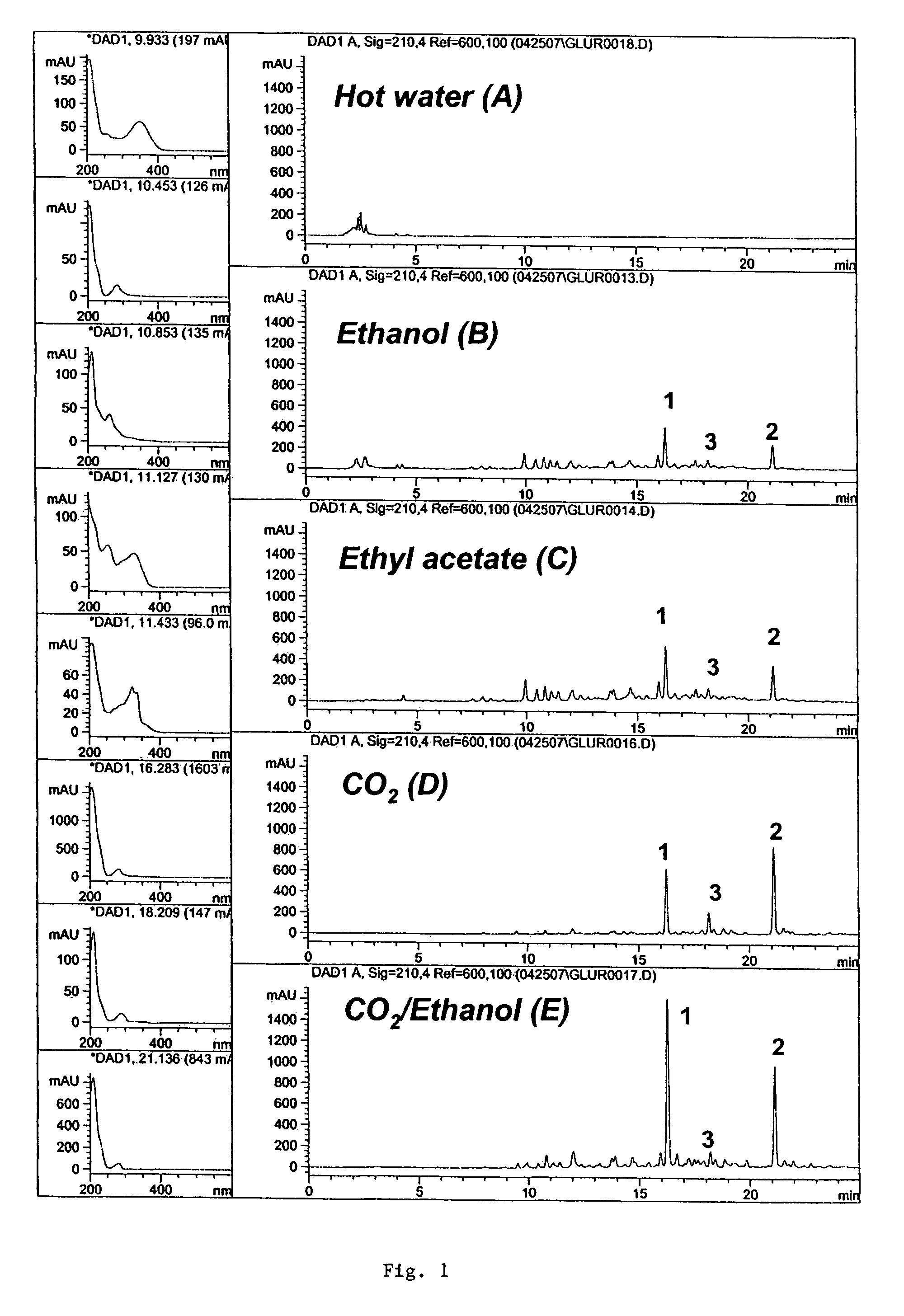Supercritical CO2 liquorice extract and products made there from
a co2 liquorice and supercritical technology, applied in the direction of biocide, antibacterial agents, drug compositions, etc., can solve the problems of waste generation and elimination, waste of resources, waste of resources, etc., and achieve the effect of lipophilic compounds not being extracted by hot water extraction processes, and not being able to recycle or dispose of spent organic materials
- Summary
- Abstract
- Description
- Claims
- Application Information
AI Technical Summary
Benefits of technology
Problems solved by technology
Method used
Image
Examples
Embodiment Construction
[0012]The present invention relates to extracts from Glycyrrhiza sp. that have less environmental impact than prior art extraction methods and that extract a greater percentage of the lipophilic components while extracting fewer hydrophilic components than the prior art methods. The present invention also relates to uses for the extracts of the present invention. In another aspect, the present invention relates to an extraction process of Glycyrrhiza sp. that utilizes a supercritical CO2 extraction process.
[0013]Extracts may be made from the root of many different species of legume-like plants from the genus Glycyrrhiza and more particularly from the species Glycyrrhiza uralensis. The plants are native to southern Europe and parts of Asia. G. uralensis is used extensively in traditional Chinese medicine. Still, the present invention is not limited to any specific plant source. Other known species of Glycyrrhiza from which extracts my be made thorough the processes of the present inv...
PUM
| Property | Measurement | Unit |
|---|---|---|
| pressure | aaaaa | aaaaa |
| w/w | aaaaa | aaaaa |
| w/w | aaaaa | aaaaa |
Abstract
Description
Claims
Application Information
 Login to View More
Login to View More - R&D
- Intellectual Property
- Life Sciences
- Materials
- Tech Scout
- Unparalleled Data Quality
- Higher Quality Content
- 60% Fewer Hallucinations
Browse by: Latest US Patents, China's latest patents, Technical Efficacy Thesaurus, Application Domain, Technology Topic, Popular Technical Reports.
© 2025 PatSnap. All rights reserved.Legal|Privacy policy|Modern Slavery Act Transparency Statement|Sitemap|About US| Contact US: help@patsnap.com


